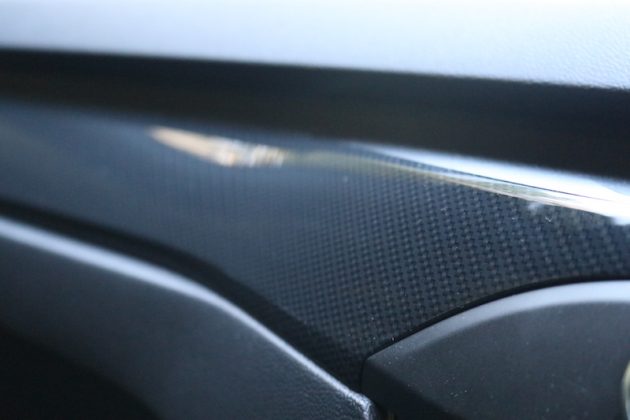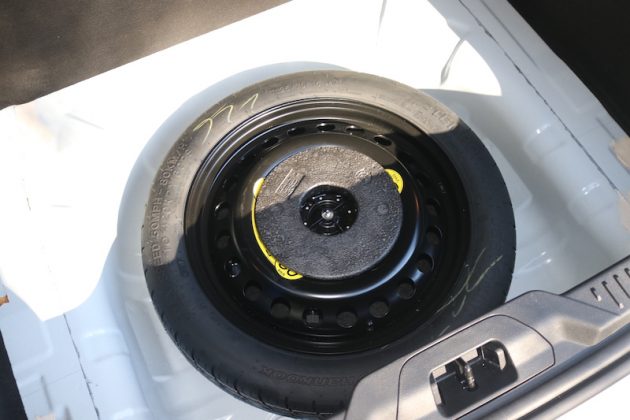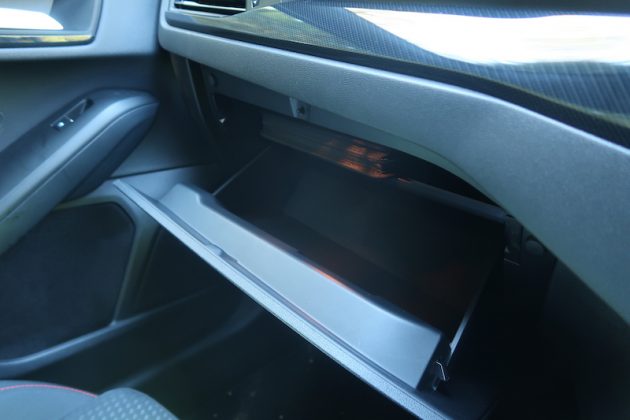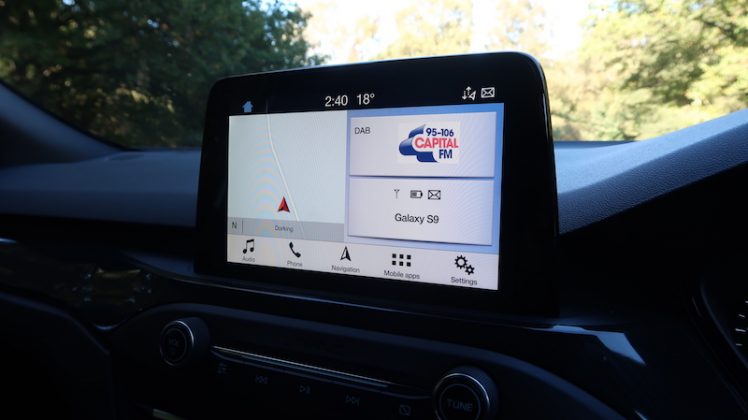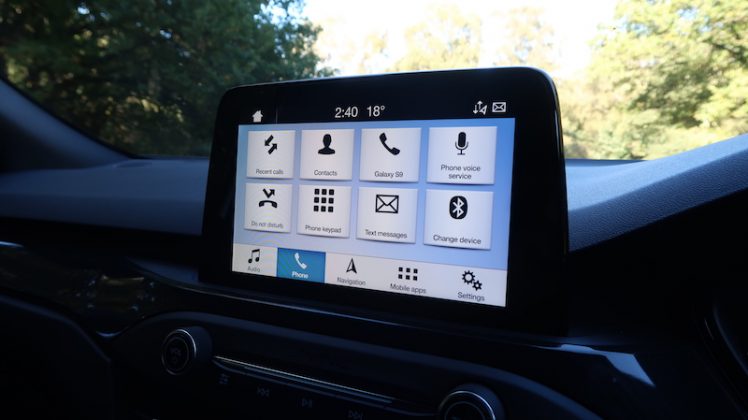After replacing the Escort 20 years ago, the Ford Focus has gone from strength-to-strength in the UK, cementing itself as one of the nation’s favourite cars. The fourth generation model is here, but can it continue the winning formula?
So, what’s changed?
Well, quite a lot. For starters, the outside has been given an overhaul, as has the interior. Ford states that in building the new Focus, the design started with a clean sheet of paper, and the car was built from the ground up. Ok, that seems like a bit of a manufacturing cliche, but regardless, the signs look promising. Just to give you some idea of what Ford is getting at, the new Focus features new engines, new tech, new gearboxes, and a new platform. Yes, there is certainly a lot of change.
In regards to engines, the new Focus carries over the 1.0 litre EcoBoost petrol from the last car, but it’s now also available with a 1.5 litre EcoBoost petrol, 1.5 litre EcoBlue diesel or a 2.0 litre EcoBlue diesel. Power ranges from 85hp to 182hp – well, that is until the new ST and RS come along of course.

Like the new Fiesta, the interior of the new Focus has been de-cluttered, and is a nicer place to be. It’s a safe place too, as you’ll find technologies such as adaptive cruise control, speed sign recognition, lane centering assist, active park assist, and evasive steering. The new Focus also offers a head up display, which is a first for any Ford in Europe, and it can also be specified with headlights that anticipate curves. All-in-all, it’s very clever – so clever in fact, that it’s been granted level 2 autonomy.
There’s a new gearbox as well; the 6-speed auto has been replaced by a new 8-speed auto, however I’ve got the slick changing 6-speed manual in the car tested here. The fourth generation Focus is built on a new platform – more specifically it’s Ford’s C2 platform which is all-new and makes its debut with this model. It offers 20% more torsional rigidity than the last model, making it safer, but it also offers more space inside.

Rear legroom wasn’t a great area for the old Focus, but thanks to a wheelbase that is 53mm longer, rear passengers can enjoy up to 81mm of knee room. Not only is that 50mm before, but it’s also the best in class. Headroom is pretty decent as well, meaning there is definitely enough space for a taller passenger. Shoulder room has also been increased by 60mm, therefore the rear will be more suited to adults than before.
The boot space has also been improved, offering 375 litres with the rear seats up, which is only a few behind the current VW Golf. If you need more space, you can of course fold down the 60/40 rear seats to give you 1,354 litres. There’s also an estate model, which offers 608 litres with the rear seats up and 1,650 with them down. Loading items in to the Focus should be easier than the Mk3, thanks to two piece rear lights that have improved the boot opening space.
Right, time for a drive
As mentioned earlier, you can either have a 1.0 litre EcoBoost petrol, a 1.5 litre EcoBoost petrol, 1.5 litre EcoBlue diesel or a 2.0 litre EcoBlue diesel. I’ve got the 1.5 diesel, which wouldn’t be my first choice, considering this is the sportier looking ST-Line model. Not only is it a diesel, but it’s also a lower powered diesel. This engine can be had with either 150hp or 120hp when slotted in to an ST-Line, and I’m afraid it’s the latter I have. You can also have a 95hp unit, but not in the ST-Line trim.

120hp may seem a bit weedy in a car that looks as sporty as is this, but thankfully it doesn’t feel under-powered like I feared it would. It’s joined by 300Nm of torque, meaning you’ll hit 62mph in 10 seconds flat, and continue to a top speed of 122mph. Granted, it’s not fast, but this engine does make decent progress. The power starts to come in as you approach 2,000 revs, and from there you’ll hit a surge of power before it starts to drop off once you clear 4,000 revs.

Not only does it offer more pulling power than you may have expected, but it’s refined too; at cruising speeds you can barely hear it. Ok, it does sound a little grumbly when you first start it up, but it settles down once its warm. Speaking of refinement, this is something the Focus does well, and it rides fantastically, despite being propped up on sports suspension that is 10mm lower than a standard Focus.

Sure, the ride gets a bit busy and a bit bumpy at lower speeds, or when you encounter broken roads, but on the whole, I’ve really impressed by the ability this car has to simply soak up the bumps. This is even more impressive by the fact that Ford has decided to adopt a rear torsion beam for lower priced models to help bring down costs – in fact, the new Focus has a lower asking price than its predecessor.

I’ve got the torsion set up here, and although it does bump a little bit over speed humps, it feels well-suited to the job in hand. That’s because it’s similar to the set up used in the Fiesta ST. It uses patented torque vectoring springs, which have been likened to bananas. These enable cornering forces to travel directly into the spring, for increased lateral stiffness.
Does it still handle well?
As you would expect from a Focus, it handles pretty God darn well. It’s very entertaining to drive through corners and it’s most certainly rewarding. It’s a bit car, yet it feels pretty nimble, which is thanks to a crash diet that has shed almost 90kg compared to the Mk3.
The weighting of the steering does feel a little bit light in Normal mode, but thankfully you’ve also got a Sport mode that is able to cure this. Speaking of driving modes, these are new to the Focus and as well as Normal and Sport, you’ve also got an Eco mode as well, but let’s not worry about that for the time being.

The steering is direct, plus there is a very good amount of front end of grip, meaning that the fourth generation, like its predecessors, is a talented machine in the corners. The body does roll a bit in the corners, but it still feels well composed. The brakes also offer a good amount of stopping power, so this all bodes well for the ST model, once that joins the party. Let’s not forget about the RS as well.

Now for those of you still fretting about the suspension setup, you can still have a short and long arm set up, but you would need to get either the ST-Line X, Titanium X or the Vignale to do so.

If you happen to select such an option, you’ll also be able to benefit from Ford’s new Continuously Control Damping set up which is new for the Focus is able to adjust automatically to driving conditions for a better ride, plus it works with the drive modes to alter the driving sensation. Despite this car having a torsion beam, it feels really grown up in the way it rides, and dare I say, it feels like a more expensive car?
Speaking of comfort and refinement, the Focus is far from a noisy place to be. The EcoBlue engine works away in the background in near silence when you’re cruising, plus there is very little in the way of road or wind noise. The seats offer a nice amount of comfort, plus the headrests are really nice and spongy, so the Focus should be absolutely fine for those longer journeys.

What kit does it have?
The model here is the ST-Line, which starts from £21,550 and sits around the middle of the Focus line-up. Standard features include ST-Line styling, 17″ alloy wheels, keyless start, air conditioning, cruise control with speed limiter, 6.5″ touchscreen with Ford Sync 3 system, DAB radio, Bluetooth and smartphone connectivity, autonomous emergency braking, lane departure warning and the new lane centering assist.
If this trim level isn’t your particular cup of tea, then fear not, as there is plenty of choice. At present, you’ve got Style, Zetec, ST-Line, Titanium, ST-Line X, Titanium X, and Vignale to choose from. That’s not forgetting the new SUV-inspired Active model, and the racier ST and RS models, which will come later on. The range currently ranges from £17,930 through to £25,450, and the new Focus is around £2,000 cheaper than its predecessor.
Better than the new Kia CEED?
As you may know, I recently drove the Kia Ceed, a car that will be a direct rival to the Focus. I impressed by the Ceed, it offers good looks a decent amount of value, a very comfy drive and of course, a seven year warranty. The Ceed offers an accomplished drive, plus it was more comfortable as it was on standard suspension and features independent rear suspension. Don’t forget other Focus models offer IRS, though.

The Focus starts at a lower price, it’s a bit more rewarding to drive, and it offers better rear space, although the boot isn’t quite as big. Both cars offer a high amount of safety, but the Ceed isn’t able to offer level 2 autonomy like the Ford does.
Level 2 autonomy?
Ah yes, level 2 autonomy. The new Focus has been able to gain this thanks to some very clever systems. For starters, it has adaptive cruise control, which may not sound overly groundbreaking, but it’s compliment by Stop&Go, lane centering assist and speed sign recognition. Stop&Go is able to automatically bring you to a stop, and if traffic moves off within three seconds the car will automatically resume where it left off.

The speed sign recognition is able to read speed signs ahead and automatically adjust the car’s speed limit accordingly. That leaves the lane centering assist, which as you would expect, gives you in the centre of your lane. The systems work well enough, but I feel they could with a bit of fine tuning as it worked faultlessly at times, but it was a bit hit and miss at other times – the same could be said for the park assist.
Not only does the new Focus offer level 2 autonomy, but it’s also been awarded five stars from Euro NCAP. This will be music to the ears of those looking to use this car as a family runabout.
How frugal is it?
The Focus is likely to be used as a family car, therefore it can’t cost to much to run. This diesel engine may not be the most fun out of the updated choice of engines for the Focus, but it will be one of the most frugal. On a combined run it will offer 78.5mpg and it emits 97g/km of CO2 emissions, meaning for the first year of VED you’ll be required to pay £145.

In my experience, I got around mid 60s, which isn’t bad, but I would have like to have got a little closer to the official figure. If it’s a petrol you’re after then the 95hp 1.0 litre EcoBoost will be the greenest engine for you as it emits 107g/km of CO2, meaning for the first year of VED you’ll be required to pay £145 and it has a combined fuel economy of 60.1mpg.
Final thoughts
Ford looks to be on to another winner with the new Focus as it has addressed some of the issues the Mk3 had, whilst building further on the positives. It’s a smart looking car, it’s good to drive, it offers more tech, it’s safe and it offers more space. It’s actually quite hard to pick out what I don’t like about this car.

Car Obsession Rating:  (4.5 / 5)
(4.5 / 5)
Pros:
- Mk3 problems have been addressed
- Fun to drive
- Great amount of safety kit/level 2 autonomy
- Tidy handling
- Frugal
- Smart looks
- Comfortable, considering the sports suspension and torsion beam
- Strong level of practicality
Cons:
- Diesel engine is not the best match for this model
- Diesel engine could also do with a touch more refinement
- Safety systems didn’t always work faultlessly
- Seats could offer a bit more support in bolsters
Rivals
 Kia Ceed
Kia Ceed
The new Ceed is a worthy opponent for the Focus, and although its drive is not quite as polished, it’s not too far behind. It’s starting price may be a little more, but it offers a good amount of kit, and like the Focus, it offers a high amount of safety equipment. Oh, it’s also got a slightly bigger boot as well.
Volkswagen Golf
 Ah, the Golf. It’s a car that is classless, and never looks out of place, no matter where you have it. The current generation was only facelifted last year, but the automotive world waits with much anticipation for the Mk8, which should land next year. The current generation has a slightly larger boot, a smarter interior and a fetching 12.3″ digital instrument cluster.
Ah, the Golf. It’s a car that is classless, and never looks out of place, no matter where you have it. The current generation was only facelifted last year, but the automotive world waits with much anticipation for the Mk8, which should land next year. The current generation has a slightly larger boot, a smarter interior and a fetching 12.3″ digital instrument cluster.
SEAT Leon
 The Leon, as you would expect, offers a similar experience to the Golf, but with sportier looks and a lower price – win-win, right? Like the cars listed above – and the Focus, for that matter – the Leon offers an accomplished drive, plus it offers a smart interior and a slick infotainment system.
The Leon, as you would expect, offers a similar experience to the Golf, but with sportier looks and a lower price – win-win, right? Like the cars listed above – and the Focus, for that matter – the Leon offers an accomplished drive, plus it offers a smart interior and a slick infotainment system.
















